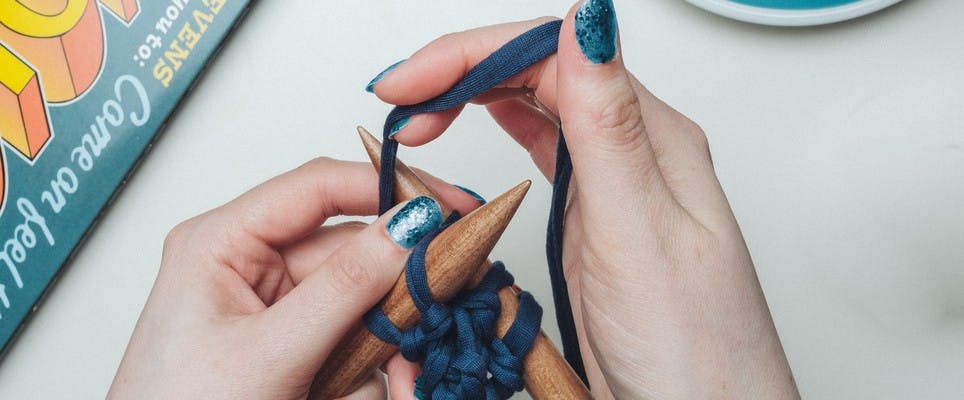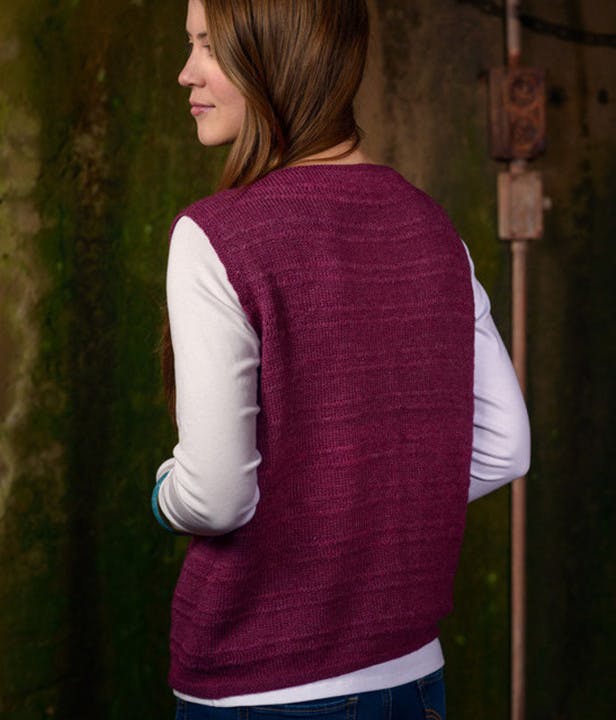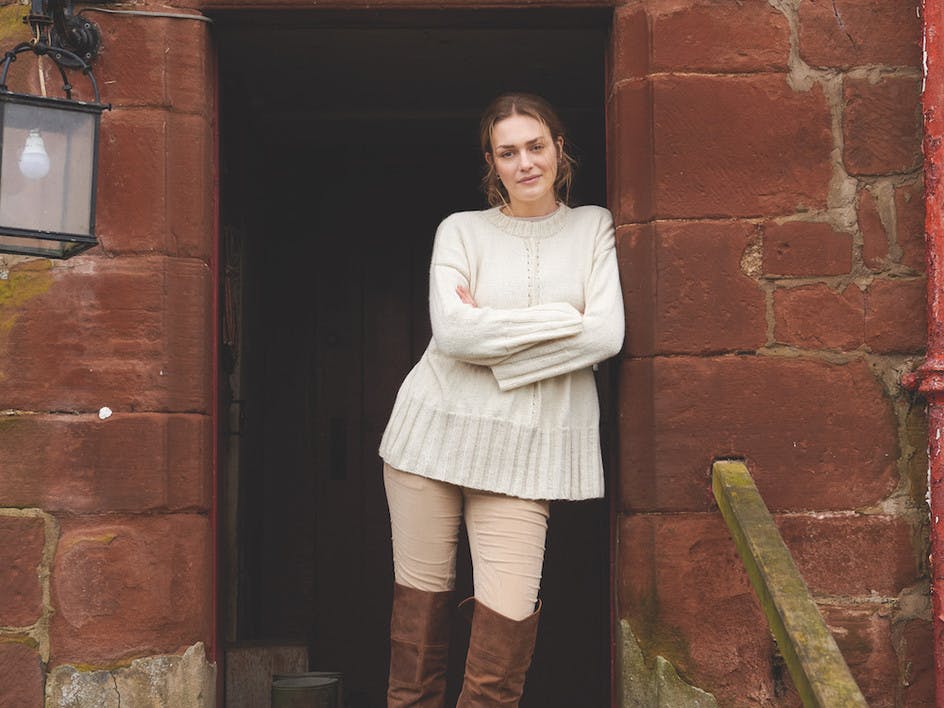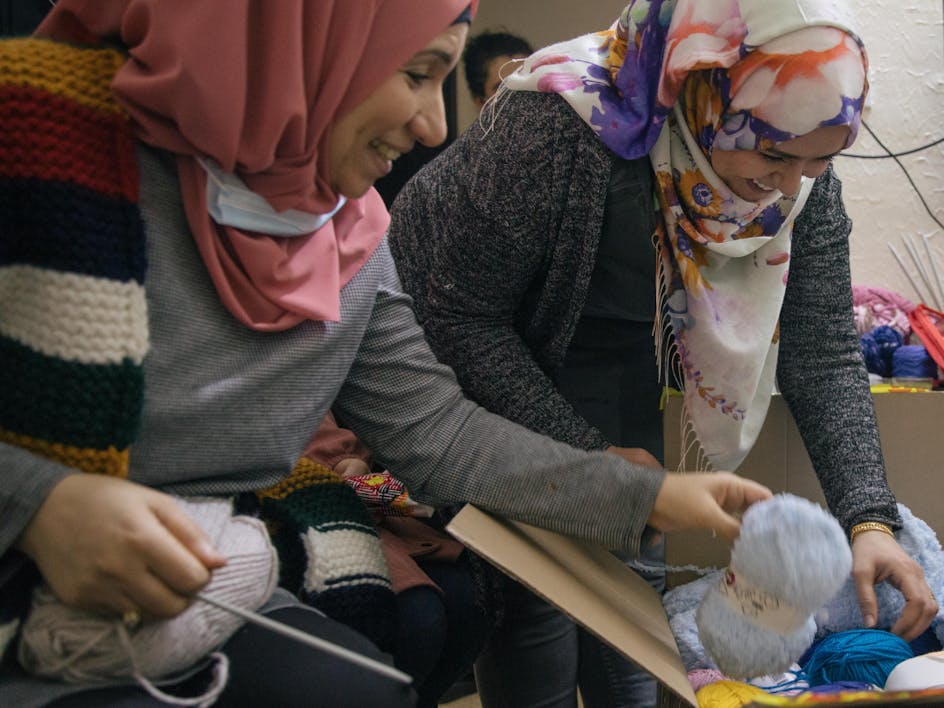4 ways to pick up a dropped stitch
Published on January 28, 2019 By Elizabeth Bagwell 4 min read
Dropping a stitch can seem like a disaster, particularly if you’re a new knitter or working on a complex pattern, and it is just so easy to do it. You look up for a moment, scratch your nose, or perhaps just twitch as you knit and a stitch pops off the needle. Fortunately, it’s not the end of the world and it’s a simple fix. So don't fret, we're here to help!
First things first: secure the stitch
The main reason that a dropped stitch is worrying is that they can unravel and create a run. In theory, a dropped stitch can unravel all the way back to the cast on edge. This is pretty rare, but the first thing to do is to secure the loop. Stick a needle, pencil, safety pin, paperclip, toothpick, split-ring stitch marker, or whatever you have handy through the loop. This will stop the stitch dropping any further.
Take a deep breath, grab a cup of coffee, swear a bit, or do whatever helps when you stub your toe, and you’re ready to fix the dropped stitch.
1. Picking up a dropped stitch with a crochet hook
Crochet hooks are ideal for picking up dropped stitches. The down side is, of course, that you need to have a crochet hook on hand, and it needs to be approximately the same size as your knitting needles, or a bit smaller.
Just make sure that you pick up the right stitches as you work. The threads can get twisted around each other. If you pick up the threads for the rows out of order, the work tends to look bunched and messy.
You can pick up a dropped stitch even if you’ve worked a few rows over the top. Separate the two stitches either side, and you’ll find a thread to pick up between them." - Elizabeth Bagwell
2. Picking up a dropped stitch with the needles you’re using
This is the fiddliest way to do it, as you’ve got less room to maneuver but has the strong advantage that you don’t need any extra tools.
Pro tip: Make the stitch match
Just as it matters whether you knit or purl a stitch, it matters which way you pull the dropped thread through the loop. Pulling the thread through the loop from the back to the front will create a knit stitch on the side of the fabric facing you, and a purl on the reverse. Going from back to front with do the opposite.
You can turn your work rather than learning to create the other kind of stitch. This is particularly handy for garter stitch or rib. In garter stitch, as you turn the work every row, it has the same effect as alternately knitting and purling with the same side facing, so you need to alternate knit and purl pick ups (or turn your work) each row.
3. Picking up a dropped stitch with extra knitting needles
If you find picking up a stitch with just your working needles awkward, perhaps because you’ve dropped multiple stitches, the yarn is stiff or you’ve dropped the stitch down several rows, you can grab an extra pair of needles and work the stitch up in just the same way. Use needles that are approximately the same size as your working needle. A size or two smaller or larger is fine but a big difference can be a real pain.
Pro tip: Fix multiple dropped stitches the same way
Use the same technique to pick up multiple dropped stitches as a single one. The work may look a little uneven, but this will almost always come out in the wash (washing literally relaxes yarn, causing it to resettle and stitches even up).
4. Sewing a dropped stitch in
If you don’t find a dropped stitch for quite some time, you may have worked several rows – or even cast off a project entirely. You still need to secure the dropped loop though, as otherwise it can unravel creating an unsightly ladder in your work.
Let’s imagine you’ve cast off the project, so you’re not going to try to get this stitch back on the needles. Secure it, as described above, and then pick it up using one of the techniques above until you reach the top of the ladder. Take a length of matching yarn and sew the stitch down. Make sure you go through the loop at least once, otherwise it will drop again.
Pro tip: Deliberately dropping stitches
You might be recoiling in horror, but dropping stitches can be a good thing. You can drop a stitch down a row or two (or three or seventeen) to fix a mistake (like knitting where you should have purled). If you’re confident, you can even drop a number of stitches, for example to fix a miss-crossed cable.
There are also stitch patterns that use dropped stitches to create an effect.
So there you have it, dropping a stitch doesn't have to be the scariest thing in the world. Just keep calm, and follow these steps, and your knitting will be as good as new.








